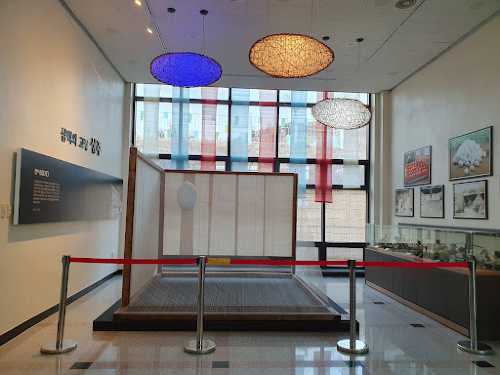Popular Trip Moments
When your heart feels weary and you need quiet comfort | A Literary Journey Along the River: Sangju Nakdong River Literature Museum | Into the quiet time flowing along the Nakdong River, Hoesangnaru Tourist Site | A place to experience the nostalgic taste and warmth of the past, Sangju Jumak. | Walking Along the River Breeze, Discovering Warmth at Sangju Jumak | 🍶 Old atmosphere along the Nakdong River, Sangju Inn | A space where simply 'staying' holds meaning: Gyeongcheon Seolim | On a day when I needed a quiet mind, at Gyeongcheonseorim | 🪵 An afternoon spent in a bookstore in a Hanok — Gyeongcheonseorim | Gyeongcheon Seorim, a Hanok Book Cafe I happened to visit while walking around Gyeongcheon Island | Gyeongcheon Seolim, a small pause in a traditional Korean house | The breath of literature flowing along the river, Sangju Nakdonggang Literature Museum | A bamboo forest cafe in Sangju | A great tea house I found in Sangju | A Romantic Summer Scent at Sangju Garden Cafe | Sangju Garden Cafe Full of Early Summer Fragrance💚 | A lush green healing experience at Sangju Garden Cafe. | Sangju Cafe with a pretty green garden that feels like summer | Sangju emotional cafe that heals with green on a summer day | Refreshing Summer Travel Course in Sangju | Healing in the lush greenery of Sangju Garden Cafe. | A healing garden cafe filled with photo zones in every corner💚 | A charming green garden and a unique experience at Sangju Cafe | Rocky Trails at Sokri Mountain National Park | A 2,000-pyeong natural lawn meets a sentimental pool villa🤍 | This is the Insect Ecology Exhibition Hall in Sangju-si, Gyeongsangbuk-do. | This is the Sangju City Cooperative History and Culture Center in Gyeongsangbuk-do. | This is the Hamchang Myeongju Museum in Sangju-si, Gyeongsangbuk-do. | This is the Sangju Hanbok Promotion Center in Gyeongsangbuk-do. | This is the National Nakdong River Biological Resource Center in Sangju-si, Gyeongsangbuk-do.
Recommended Attractions at Popular Destinations
Popular Attractions in Bangkok | Popular Attractions in Manila | Popular Attractions in Tokyo | Popular Attractions in Taipei | Popular Attractions in Hong Kong | Popular Attractions in Seoul | Popular Attractions in Kuala Lumpur | Popular Attractions in Los Angeles | Popular Attractions in Shanghai | Popular Attractions in New York | Popular Attractions in Shenzhen | Popular Attractions in Osaka | Popular Attractions in Singapore | Popular Attractions in London | Popular Attractions in Guangzhou | Popular Attractions in San Francisco | Popular Attractions in Beijing | Popular Attractions in Macau | Popular Attractions in Bali | Popular Attractions in Jakarta | Popular Attractions in Paris | Popular Attractions in Ho Chi Minh City | Popular Attractions in Istanbul | Popular Attractions in Phuket | Popular Attractions in Chicago | Popular Attractions in Seattle | Popular Attractions in Toronto | Popular Attractions in Orlando | Popular Attractions in Cebu | Popular Attractions in Chiang Mai
Popular Restaurants in Sangju-si
Temachon | Yeonliji | Baeggangjeong | 블란도374 | 참새방앗간 | Taste Na Chicken | Bhc Chicken | Gosubuji | Hanseong Fusion Town | Bae Yunbak Charcoal Fire Ribs | Obok Yummy House | Eonni Ya | Hometown Mountain Cheon | Gaja Bull Ne | Original Chon Chicken | Daemyeong Restaurant | Ba Rokeo Seasoned Chicken | Siru Bong Restaurant | Choeseungyeon Anago Sashimi | Gimbap Nara | Hye Chan Restaurant | Twosome Place | Munjang Dae Meat Eating Restaurant | Sura Gan | Lotteria Sangju Store | Myeongsil Sanggam Korean Beef Meat Eating Restaurant | Peobeulrik Kitchen | Gong Geom Whole Chicken | Sunsal Love Chicken | Pork Feet Generation King Entrails
Popular Ranked Lists
Top 50 Must-Visit Restaurants in Seoul | Popular Premium Hotels Near Lafayette County | Popular Best Things to Do in Jinchang | Top 50 Must-Visit Restaurants in Beijing | Top 50 Must-Visit Restaurants in Changsha | Top 10 Trending Attractions in Phuket | Popular Premium Hotels Near Landasan Ulin Timur | Popular Luxury Hotels Near Bibb County | Popular Premium Hotels in Pragelato | Top 10 Trending Attractions in Xi'an | Top 50 Must-Visit Restaurants in Berlin | Popular Luxury Hotels in Tegernsee Lake | Top 50 Must-Visit Restaurants in Macau | Top 50 Luxury Hotels near East Hampshire District | Popular Premium Hotels Near Baru | Top 10 Trending Attractions in Jeju | Popular Trending Attractions in Paris | Top 50 Luxury Hotels near Cotronei | Top 20 Luxury Hotels near Oichalia | Top 10 Trending Attractions in Tokyo | Popular Premium Hotels Near Sterlitamak | Top 50 Must-Visit Restaurants in Paris | Top 50 Must-Visit Restaurants in Sanya | Popular Trending Attractions in Chengdu | Top 50 Must-Visit Restaurants in Phuket | Popular Trending Attractions in Guiyang | Top 20 Trending Attractions in Beijing | Top 50 Must-Visit Restaurants in Dalat | Popular Trending Attractions in Tonglu | Popular Trending Attractions in Singapore
About
Payment Methods
Our Partners
Copyright © 2025 Trip.com Travel Singapore Pte. Ltd. All rights reserved
Site Operator: Trip.com Travel Singapore Pte. Ltd.
Site Operator: Trip.com Travel Singapore Pte. Ltd.






















